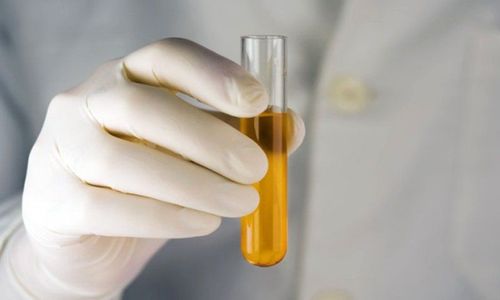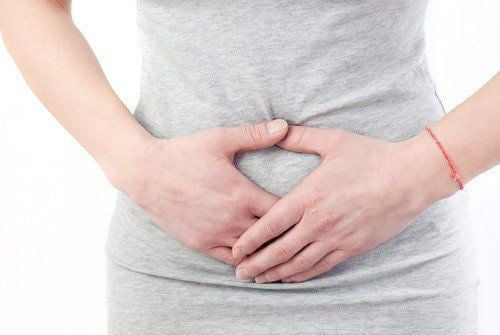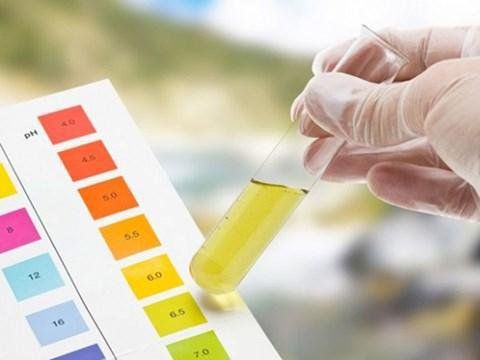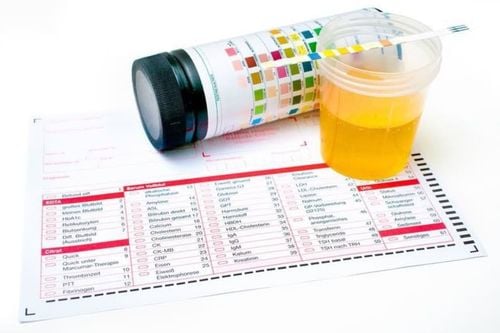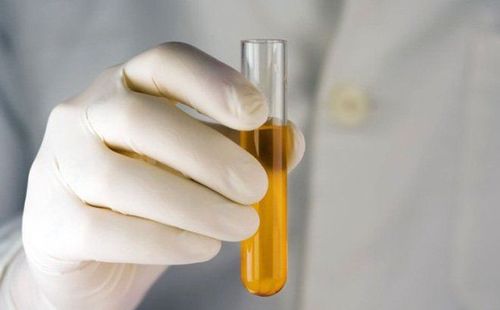The article was professionally consulted by Master of Medicine, Doctor Pham Thi Thuy Nhung - Deputy Head of Laboratory Department - Vinmec Hai Phong International General Hospital.
The urinary system excretes urine to remove waste and toxins produced by the body during metabolism, helping to maintain internal balance. When the body is healthy, urine is usually clear or pale yellow. When the body has a disease, urine has white sediment. There are many causes of urine sediment. This sedimentation of urine can occur for several reasons:
1. Dehydration
Dark-colored urine can easily confirm that the urine has white sediment which can result from dehydration - when an individual does not drink enough fluids. Children and the elderly are particularly at risk for dehydration, especially if they experience diarrhea, vomiting, or fever.
2. Due to food
The foods we consume can influence the color and clarity of urine. Eating foods high in phosphorus or vitamin D can lead to urine sediment as the kidneys excrete excess phosphorus. Additionally, foods like orange juice, milk, beets, and asparagus may cause urine to appear cloudy. Alcohol consumption also contributes to a loss of clarity in urine. However, adjustments in diet can restore urine to its usual clear state.
3. Urinary Tract Infection (UTI)
One of the most common causes of urinary sediment is a urinary tract infection. Urinary tract infection is an infection of parts of the urinary tract, characterized by the presence of bacteria in the urine or the appearance of symptoms indicating bacterial invasion of one or more parts of the urinary tract.
This condition can result in urine having white or milky sediment and may emit a foul odor. UTI can also cause pus or blood in the urine, making it cloudy, often accompanied by the accumulation of white blood cells. Sediment in urine can also be due to the accumulation of white blood cells. When bacteria or viruses invade and cause damage and disease inside the urinary tract, urine will turn cloudy. Infection in the urinary tract may cause pain and a burning sensation during urination.

4. Kidney infections
Most infections affect the kidneys. They start as urinary tract infections but can spread and worsen if not treated properly.
Kidney infections can appear as urinary sediment because the infection produces pus, which mixes with the urine. Similar to the symptoms of urinary tract infections, kidney infections can cause fever, chills, cramps, fatigue, nausea and vomiting, back pain, and white urinary sediment, bloody, or foul-smelling. Kidney infections can also be caused by kidney stones.
5. Urethritis due to Gonorrhea, Chlamydia
Inflammation of the urethra can affect urine and semen excretion and cause complications. Urethritis caused by gonorrhea can result in urinary sediment.
In addition, bacterial or fungal infections may result from sensitivities to ingredients in soaps, detergents, fabric softeners, and personal care products. Urethritis by Gonorrhea can cause itching around the vulva, foul-smelling discharge, pale or colored discharge, fishy odors, and increased discomfort during sex, as well as painful urination. Cloudy urine can also be caused by prostatitis which causes painful ejaculation, abdominal pain, and blood in the urine.
If you notice cloudy urine along with other symptoms like painful urination, fever, or lower back pain, it is essential to consult a medical professional. An ultrasound and urine test can help diagnose any underlying issues.
6. Chyluria
Chyluria is a condition affecting the urinary system, resulting from a leak of lymphatic fluid into the renal pelvis. This condition can be congenital, caused by trauma, or due to infection with filarial parasites. Chyluria primarily consists of lipids, including triglycerides, phospholipids, and free cholesterol. It may be triggered by Wuchereria Bancrofti filariasis, congenital malformations, mediastinal tumors, or trauma that obstructs the lymphatic vessels.
Symptoms of chyluria include cloudy white urine that resembles milk or rice water, accompanied by fatty deposits. These deposits may settle, producing glue-like films and white patches similar to curds. This symptom can occur intermittently.
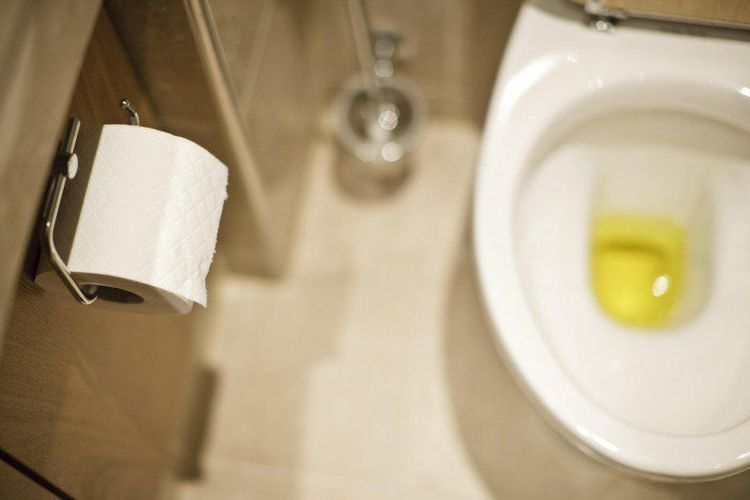
7. Phosphate in Urine
Phosphate in urine is characterized by the excessive excretion of phosphates in the urine. Patients may notice clear urine that sometimes appears like rice water, particularly in the morning. Upon settling, the urine may contain sediment resembling lime. While phosphate in urine itself is not a disease, persistent occurrence combined with inadequate water intake can lead to the formation of kidney stones due to phosphate crystal deposition.
8. Due to medication
Certain medications may also contribute to urine sediment. This includes diabetes medications and vitamins such as B and C, which are high in phosphorus.
Additionally, insufficient daily water intake can result in urine sediment, as not drinking enough water hampers the body’s ability to filter the urinary tract effectively. A straightforward solution is to increase water consumption to about 1-2 liters each day, which can help normalize urine appearance. Some foods can also influence urine color and clarity; for instance, consuming more fruits and vegetables tends to make urine clearer and odorless.
In summary, dietary changes can help clear the urine and restore it to a normal state. However, if urine sediment is due to underlying health issues, it's important to seek medical evaluation to identify and treat any potential diseases promptly.
To arrange an appointment, please call HOTLINE or make your reservation directly HERE. You may also download the MyVinmec app to schedule appointments faster and manage your reservations more conveniently.





